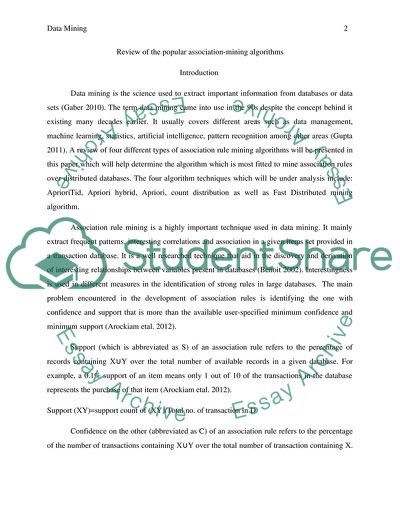Cite this document
(Review of the Popular Association-Mining Algorithms - Apriori Case Study Example | Topics and Well Written Essays - 2500 words, n.d.)
Review of the Popular Association-Mining Algorithms - Apriori Case Study Example | Topics and Well Written Essays - 2500 words. https://studentshare.org/information-technology/1818020-data-mining
Review of the Popular Association-Mining Algorithms - Apriori Case Study Example | Topics and Well Written Essays - 2500 words. https://studentshare.org/information-technology/1818020-data-mining
(Review of the Popular Association-Mining Algorithms - Apriori Case Study Example | Topics and Well Written Essays - 2500 Words)
Review of the Popular Association-Mining Algorithms - Apriori Case Study Example | Topics and Well Written Essays - 2500 Words. https://studentshare.org/information-technology/1818020-data-mining.
Review of the Popular Association-Mining Algorithms - Apriori Case Study Example | Topics and Well Written Essays - 2500 Words. https://studentshare.org/information-technology/1818020-data-mining.
“Review of the Popular Association-Mining Algorithms - Apriori Case Study Example | Topics and Well Written Essays - 2500 Words”. https://studentshare.org/information-technology/1818020-data-mining.


